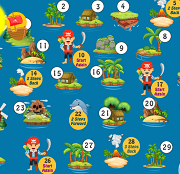Extinction Of Species Science Game
This science game will help children learn all about the extinction of species. Begin by reading all about the extinction below before playing the game.
Many species are endangered due to human activities, habitat loss, volcanic eruptions, and other human activities. One species is lost and replaced by another dozen to a hundred species. Although the new species might not be related to an existing one, they will likely make a better future. The new species may not be related to the old one, but they will be more resilient in the long-term if they survive. This is called the extinction-competition theory, which can be traced back to the Stone Age.
Natural selection
Evolution is the process by which an organism evolves into another one through natural selection. This is an important factor in the diversification and growth of life on Earth. Charles Darwin developed natural selection in the 1830s. Before introducing the concept to the world, he studied South American animals and fossils as well as the Pacific Ocean.
To survive, a species must have a higher mutation rate than the rate of environmental degradation or accumulation of harmful mutations. Because there are fewer beneficial mutations per generation in smaller populations, the rate of extinction is much faster. The species will eventually die out due to the excess number of mutations. A low-rate population is more likely to die.
Important to remember that although selective extinction can be a form of extermination, it can also occur at very low rates. A species can also become extinct after it is replaced by another species. Punctuated equilibrium theory assumes that an ancestor of a species also ancestor its descendants. This is a way to prevent extinction. Sometimes, an invasive species can replace a species.
Natural selection can lead to the extinction or reintroduction of certain species. However, it is possible to find individuals that have been adapted to particular environments. This can result in a rapid increase of the population size for a species and a lower rate of extinction. This is also true for genes that are not native to a species. These genes can spread throughout a population, reducing its genetic diversity.
Activities of the human mind
Human activities are constantly threatening Earth's ecosystems. Human activities affect approximately three quarters of the earth's land surface, and more than 80 percent of the oceans. More than one million animal and plant species have been destroyed by human activities. Agriculture occupies more than 66% of the land surface. Annually, 40 billion tons of timber are harvested. This is more than twice the amount that was harvested during the previous major extinction.
Many wild species have been wiped out by human activities, including hunting, habitat destruction and poor land use practices. Hunting and unsustainable logging are also factors in the extinctions of other species dependent on these species. Human activities can also lead to the introduction and spread of parasites and diseases into the environment, which can cause severe harm to species. Small populations can lead to species extinctions from human activities. Habitat destruction and overpopulation can cause many species to vanish.
Over 99 percent of all species have been exterminated by human activities. In the past, extinctions were caused by natural causes, such as volcanic eruptions or asteroid impacts. Today, however species extinctions occur up to a thousand to 10,000 times faster than the last extinction. Most of these extinctions are caused by human activities. Over-exploitation of natural resources and habitat loss are the main causes of species extinction today. Pervasive plastic pollution in the oceans is another threat.
Human activities have caused the extinction of species on every continent. All species have been wiped out by human activities on all continents, and all oceans. Asia and Africa are home to some of the most famous species that have died. Human activities are the main cause of species extinction. Although this process is natural, it can still be harmful to the environment.
Volcanic Eruptions
Scientists are starting to consider the possibility of large-scale volcanic eruptions being responsible for the recent mass extinction. Volcanic eruptions can cause catastrophic climate change and pollute the atmosphere. This study may stimulate further research into other mass extinctions such as the end of the ice age. They could also stimulate research into other extinction events possibly caused by large-scale volcanic activities.
This study also revealed that there were two periods with intense volcanism around 200 million years ago. These volcanic eruptions were caused by a period planetary cooling, which led to an abrupt mass extermination. The 'Late Ordovician Mass Extinction' caused the extinctions of 85% of marine species, and altered the course of evolutionary processes. Scientists have managed to identify the mechanism by which mass extinctions are triggered, despite not being able to establish a link between large volcanic eruptions.
Every few million years, volcanoes erupt. This means that the earth's age is approximately 5.5 billion years. Scientists discovered Triassic-era fossils beneath and above the lava flow sedimentary layers. These fossils suggest that entire species were destroyed by these massive eruptions. They decimated eel-like fish and early crocodile species as well as tree lizards and deciduous trees.
A volcanic eruption in southern China caused the last major extinction. The massive eruption in southern China caused a global drop in temperature, possibly contributing to the mass extinction that occurred at the end the Permian. This event killed nearly 90% of Earth's wildlife, and more than 80% marine life. This event is crucial for the planet's environment, even though scientists still debate the causes.
Habitat loss
Many species are facing extinction because of habitat destruction. Animals can't care for their children or protect themselves without a natural habitat. Human activities and natural processes can cause habitat destruction. Habitat blocks that are large are often broken down into smaller pieces. The remaining habitat is too small to support many species. This creates barriers to migration and ultimately extinction.
Habitat destruction can have a negative impact on biodiversity and interactions between species. Habitat fragmentation can lead to a decrease in the effectiveness of species and communities. Predators have a harder job finding prey. Predators find more interaction with prey in less fragmented landscapes. Habitat loss is a major threat to species.
Habitat destruction can also lead to human extinction. The main cause of extinction is alteration in the natural environment that a person lives in. These species are less likely to thrive in areas with fewer people. Habitat destruction is a serious problem. People destroy natural habitats for profit. This can lead to the loss of biodiversity and the extinction of species. Clearing land for agriculture, logging and dams for hydroelectric power plant development can lead to the destruction of natural habitats. Our own existence is also at risk by destroying the environment.
The ESA has been successful in reducing habitat loss but it is not the solution to the problem. Habitat loss is a significant cause of species extinction, and must be addressed. The ESA is the best law to protect endangered species' habitats. The ESA offers the strongest protection for federal lands critical to endangered species. These lands must be protected for the benefit of endangered species.
Pollution
Pollution is one of the most serious environmental problems in our time. Pollution can affect ecosystems in many ways, some of which have far-reaching consequences for human health. The ocean can have a negative impact on wildlife and humans. There are harmful chemicals in the blood of Arctic animals, and in the forests. Other forms of pollution can also affect birds' and animals' routine behavior by affecting their breeding habits and food habits. Air pollution can be dangerous to many species, and it can vary from one area to the next.
Habitat loss is one of the most serious consequences. Habitat loss is the most serious consequence of this problem. One-fifth the Earth's surface has been reduced by human population. Over eighty percent all terrestrial species live in forests. Ocean acidification and marine debris are creating havoc. Many species are already endangered or threatened by pollution. The number of extinct species is on the rise.
Many species depend on plants for their survival. They provide food and vital raw materials. The polluting of food sources is a threat to species. They are also used for medicinal purposes, as well as wood products, latex, and rubber. These resources are essential for species and can cause a disruption to the ecosystem. There are many reasons species can die, including climate change and introduction of non-native species.
The main contributor to biodiversity loss is humanity. They have altered 75% of Earth's terrestrial ecosystems and 66% of Earth's marine ecosystems since preindustrial times. This catastrophe is also being caused by rising population and increased demand. The first global assessment of 2008 revealed that over one-third (or more) of the earth's land and freshwater resources were used for crop production. The rate of species extinction is alarming.










